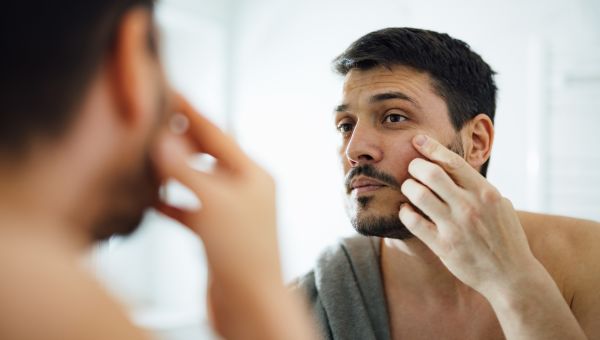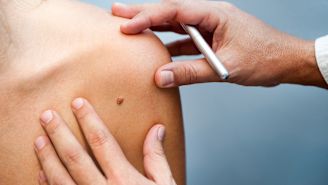6 ways to spot skin cancer
Do you know the signs and symptoms of skin cancer? Learn how to spot them at home.
Updated on April 1, 2024

Using sunscreen is one important way to protect yourself from the sun’s damaging UV (ultraviolet) rays—and skin cancer. But there’s something else you can do: a skin self-exam. These at-home exams can catch early signs of skin problems—and earlier detection of skin cancer means better outcomes. Yet the results of a 2015 survey by the American Academy of Dermatology (AAD) showed that 50 percent of men and 35 percent of women didn’t know how to check their skin, and only half said they did self-exams. While some parts of your body can be tricky to examine, skin self-exams are something you can do at home for earlier detection of skin problems such as skin cancer. Click through to discover household items you can use to make the job a little easier.

Use a mirror
Choose a well-lit room with a full-length mirror. You’ll also need a hand-held mirror for areas that are hard to see, such as the back of your legs—or enlist the help of a family member or close friend to search those areas of your body. Here's the importance of doing these checks: Skin cancer is the most common cancer in the United States and some types of skin cancer can be deadly. When it's detected earlier, skin cancer can be easier to treat.

Note suspicious spots
It’s a good idea to jot notes in a notebook or health tracker app as you examine your skin. But how can you tell if a spot is normal or cause for concern? Consider getting a full-body check from your dermatologist to check for existing moles, freckles and birth marks. Then watch for the appearance of any new ones—along with changes to existing moles or spots. Contact your dermatologist right away if anything looks different or just concerns you. Otherwise take your notes to your next check-up.

Take photos
Another way to keep records is to take a picture of your back each month so that you can track any changes. The back is one of the most neglected parts of the body for applying sunscreen and doing skin self-exams. According to the AAD, it's also the most common location for melanoma, a skin cancer that is not very common but acounts for most deaths caused by skin cancer.

Search your scalp
Whether you have hair or not, your scalp isn't immune to skin cancer. In fact, it's not unusual for skin cancer to develop there simply because the head is so frequently exposed to the sun. To check your scalp, use your hair dryer or a comb to part your hair, which gives you a better view. Again, a friend or relative can help you check areas of your scalp that are hard for you to see. Ask to have the back of your neck and behind your ears checked, too.

Use a pencil eraser
An eraser on the end of a pencil can help you judge the size of a mole. Normal moles are typically smaller than 6 millimeters across, which is about 1/4 inch. Think you might have a suspicious mark? Some cellphone apps can provide information about skin cancer. Apps can also provide an easy way to organize notes for your healthcare provider's visit.

Schedule your next skin check
Many experts recommend that you do a skin self-exam monthly, unless your healthcare provider advises you to do it more frequently. That's in addition to an annual skin check by a dermatologist (a doctor who treats skin conditions). Whether you schedule it in your calendar, with an app or on a pen and paper planner, it's important to keep your appointmenet for healthy skin.
More On


video

article

slideshow


video


video
